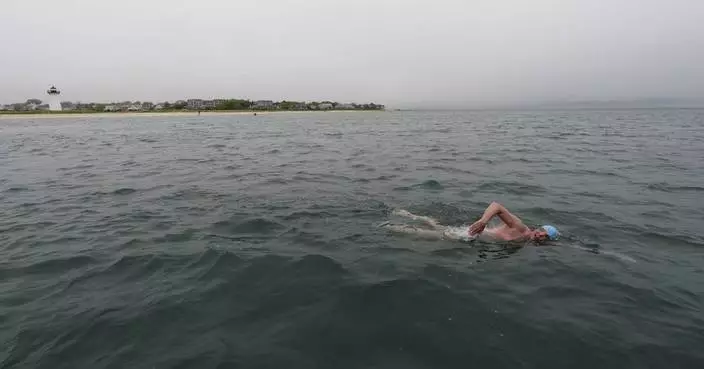MADISON, Wis. (AP) — Schuyler Jones, a globe-trotting American anthropologist and adventurer whose exploits drew comparisons to iconic movie character Indiana Jones, has died. He was 94.
Jones' stepdaughter, Cassandra Da'Luz Vieira-Manion, posted on her Facebook page that Jones died on May 17. She said she had been taking care of him for the last six years and “truly thought he might live forever.”
“He was a fascinating man who lived a lot of life around the world,” she wrote.
Da’Luz Vieira-Manion didn’t immediately respond to messages from The Associated Press on Saturday.
Jones grew up around Wichita, Kansas. His younger sister, Sharon Jones Laverentz, told the Wichita Eagle that her brother had visited every U.S. state before he was in first grade thanks to their father's job supplying Army bases with boots.
He wrote in an autobiography posted on Edinburgh University's website that he moved to Paris after World War II, where he worked as a photographer. He also spent four years in Africa as a freelance photographer. In his 1956 book “Under the African Sun,” he tells of surviving a helicopter crash in a marketplace in In Salah, Algeria, the Wichita Eagle reported. After the helicopter crashed he discovered he was on fire; gale-force winds had reignited the ashes in his pipe.
“Camels bawled and ran, scattering loads of firewood in all directions,” Jones wrote. “Children, Arabs and veiled women either fled or fell full length in the dust. Goats and donkeys went wild as the whirling, roaring monster landed in their mist ... weak with relief, the pilot and I sat in the wreckage of In Salah's market place and roared with laughter."
He later moved to Greece, where he supported himself by translating books from German and French to English. He decided to drive through India and Nepal in 1958. He said he fell in love with Afghanistan during the trip and later enrolled at Edinburgh to study anthropology.
“He was more interested in the people and cultures he was finding than he was in photography and selling those,” his son, archeologist Peter Jones, told the Wichita Eagle.
After graduating he returned to Afghanistan and began to study local communities living in the country's remote eastern valleys. He parlayed that research into a doctorate at Oxford University and went on to become a curator and later director at Pitt Rivers Museum that houses the university's archeological and anthropological collection. Upon retirement, he was awarded the Commander of the Order of the British Empire award, one step below knighthood.
Similarities between Jones and George Lucas' Henry “Indiana” Jones Jr. character are striking. Aside from the name and the family business — Indy's father, Henry Sr., was an archaeologist, just like Schuyler Jones' son, Peter, are archeologists — they were both adept at foreign languages and wore brown fedoras.
And like Indy, Schuyler Jones believed artifacts belonged in museums, Da'Luz Vieiria-Manion told the Wichita Eagle. Eric Cale, executive director of the Wichita-Sedgwick County Historical Museum, told the newspaper that Jones permanently donated his grandfather's artifacts to the museum. Jones wrote in his 2007 book “A Stranger Abroad” that he wanted to find the Ark of Covenant and donate it to a museum, which is exactly what Indy accomplished in “Raiders of the Lost Ark” — at least until the U.S. government seized the relic and hid it away again at the end of the movie.
Pat O'Connor, a publisher who worked with Jones, told the newspaper that Jones had a “low tolerance” for slow-witted and pretentious people.
“I’ve never met a man so talented and capable and at the same time approachable,” O’Connor said. “But if you transgressed . . . by trying to present yourself as somewhat above your station intellectually, then that is the end.”
Jones wrote in “A Stranger Abroad" that he first heard of Indy in the 1980s when a museum director in Madras asked him if he was the real-life version. He wrote that he had no idea what she was talking about, but later thought the comparison was driving more students to attend his lectures at Oxford.
Jones was married twice, first to Lis Margot Sondergaard Rasmussen, and then to Da'Luz Vieria-Manion's mother, Lorraine, who died in 2011. He later began a relationship with actress Karla Burns, who died in 2021, the Wichita Eagle reported.
He is survived by his son, three daughters, a sister, six grandchildren, six great-grandchildren and one great-great-grandchild, the newspaper reported.
This story corrects Schuyler Jones’ field of study; he was an anthropologist, not an archeologist.
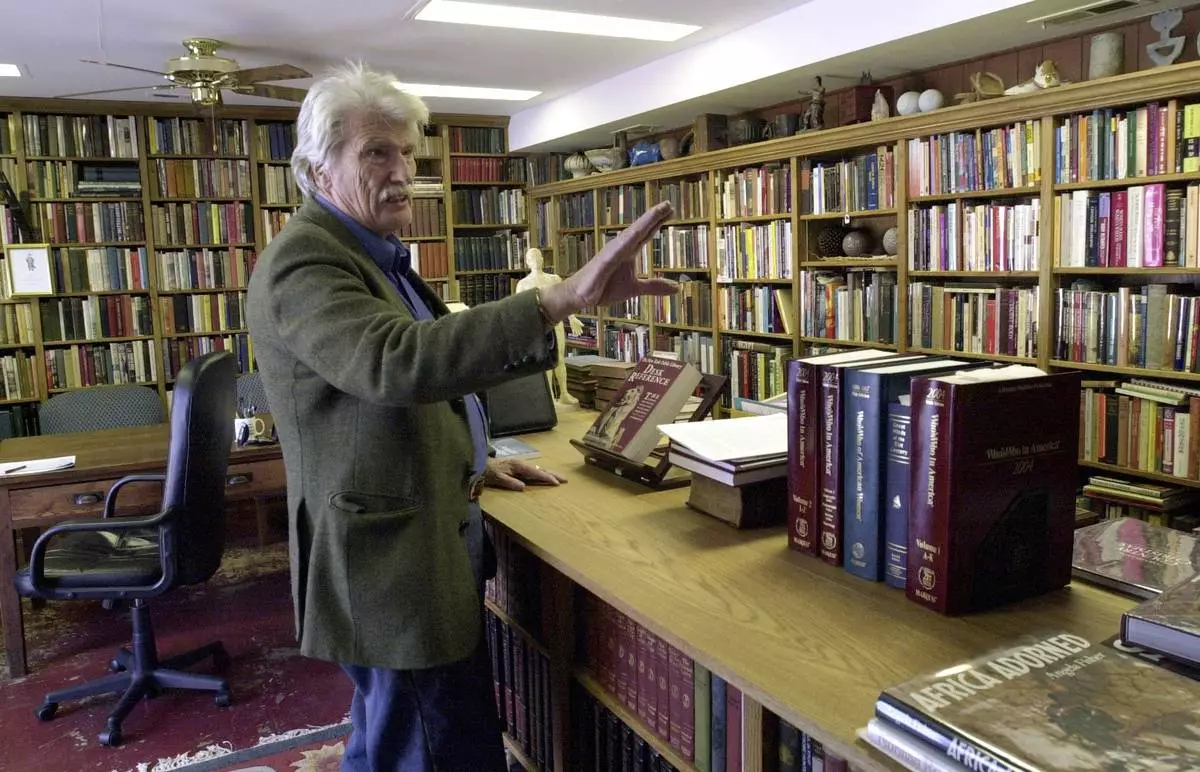
FILE - Schuyler Jones talks about the bookcases he built that line his library Monday, Feb. 6, 2006, in Wichita, Kansas. Jones, a globe-trotting American adventurer whose exploits drew comparisons to iconic movie character Indiana Jones, has died. He was 94. Jones' step-daughter, Cassandra Da'Luz Vieira-Manion, posted on her Facebook page that Jones died on May 17, 2024. (Dave Williams/The Wichita Eagle via AP)
VINEYARD HAVEN, Mass. (AP) — Lewis Pugh has followed an unspoken rule during his career as one of the world’s most daring endurance swimmers: Don’t talk about sharks. But he plans to break that this week on a swim around Martha’s Vineyard, where “ Jaws” was filmed 50 years ago.
The British-South African was the first person to complete a long-distance swim in every ocean of the world — and has taken on extreme conditions everywhere from Mount Everest to the Arctic.
“On this swim, it’s very different: We’re just talking about sharks all the time,” joked Pugh, who will, as usual, wear no wetsuit for the 62-mile (100-kilometer) swim.
For his swim around Martha’s Vineyard in 47-degree (8-degree Celsius) water he will wear just trunks, a cap and goggles.
Pugh, 55, is undertaking the challenge because he wants to change public perception around the now at-risk animals — which he said were maligned by the blockbuster film as “villains, as cold-blooded killers.” He will urge for more protection for sharks.
“We need to protect life in our oceans — all our futures rely on it,” he said on Thursday before starting out from a beach in front of the Edgartown Harbor Lighthouse and swimming an initial 3.9 miles (6.2 kilometers) for nearly three hours. On Friday, he'll get in the water and swim again — and again, for an estimated 12 days, or however long it takes him to complete the swim. He'll spend the rest of his time on the Vineyard educating the public about sharks.
Later Thursday, he crawled out of the water, where curious seals bobbed in the waves, and onto a boat to warm up and refuel.
He began his endeavor just after the New England Aquarium confirmed the first white shark sighting of the season, earlier this week off the coast of Nantucket.
“It’s going to test me not only physically, but also mentally,” he said, while scoping out wind conditions by the starting line earlier this week. “I mean every single day I’m going to be speaking about sharks, sharks, sharks, sharks. Then, ultimately, I’ve got to get in the water afterwards and do the swim. I suppose you can imagine what I’ll be thinking about.”
Pugh said the swim will be among the most difficult he’s undertaken, which says a lot for someone who has swum near glaciers and volcanoes, and among hippos, crocodiles and polar bears. No one has ever swum around the island of Martha's Vineyard before.
But Pugh, who often swims to raise awareness for environmental causes — and has been named the United Nations Patron of the Oceans for several years — said no swim is without risk and that drastic measures are needed to get his message across: Around 274,000 sharks are killed globally each day — a rate of 100 million every year, according to the American Association for the Advancement of Science.
“It was a film about sharks attacking humans and for 50 years, we have been attacking sharks,” he said of “Jaws.” “It’s completely unsustainable. It’s madness. We need to respect them.”
He emphasizes that the swim is not something nonprofessionals should attempt. He’s accompanied by safety personnel in a boat and kayak and uses a “Shark Shield” device that deters sharks using an electric field without harming them.
Pugh remembers feeling fear as a 16-year-old watching “Jaws” for the first time. Over decades of study and research, awe and respect have replaced his fear, as he realized the role they play in maintaining Earth’s increasingly fragile ecosystems.
“I’m more terrified of a world without sharks, or without predators,” he said.
“Jaws” is credited for creating Hollywood’s blockbuster culture when it was released in summer 1975, becoming the highest grossing film up until that time and earning three Academy Awards. It would impact how many viewed the ocean for decades to come.
Both director Steven Spielberg and author Peter Benchley have expressed regret over the impact of the film on viewers’ perception of sharks. Both have since contributed to conservation efforts for animals, which have seen populations depleted due to factors like overfishing and climate change.
Discovery Channel and the National Geographic Channel each year release programming about sharks to educate the public about the predator.
Greg Skomal, marine fisheries biologist at Martha’s Vineyard Fisheries within the Massachusetts Division of Marine Fisheries, said many people tell him they still won't swim in the ocean because of the sheer terror caused by the film.
“I tend to hear the expression that, ‘I haven’t gone in the water since ‘Jaws’ came out,’” he said.
But Skomal, who published a book challenging the film's inaccuracies, said “Jaws” also inspired many people — including him — to study marine biology, leading to increased research, acceptance and respect for the creatures.
If “Jaws” were made today, he doesn't think it'd have the same effect. But in the 1970s, “it was just perfect in terms of generating this level of fear to a public that was largely uneducated about sharks, because we were uneducated. Scientists didn’t know a lot about sharks.”
Skomal said the biggest threat contributing to the decline of the shark population now is commercial fishing, which exploded in the late 1970s and is today driven by high demand for fins and meat used in food dishes, as well as the use of skin to make leather and oil and cartilage for cosmetics.
“I think we’ve really moved away from this feeling, or the old adage that, ‘The only good shark is a dead shark,’” he said. “We’re definitely morphing from fear to fascination, or perhaps a combination of both.”
See an AP photo gallery from around Martha's Vineyard and the start of Pugh's swim here.

An app is used to monitor endurance swimmer Louis Pugh's temperature while he swims in 47 degree F water, Thursday, May 15, 2025, off Edgartown, Mass. (AP Photo/Robert F. Bukaty)
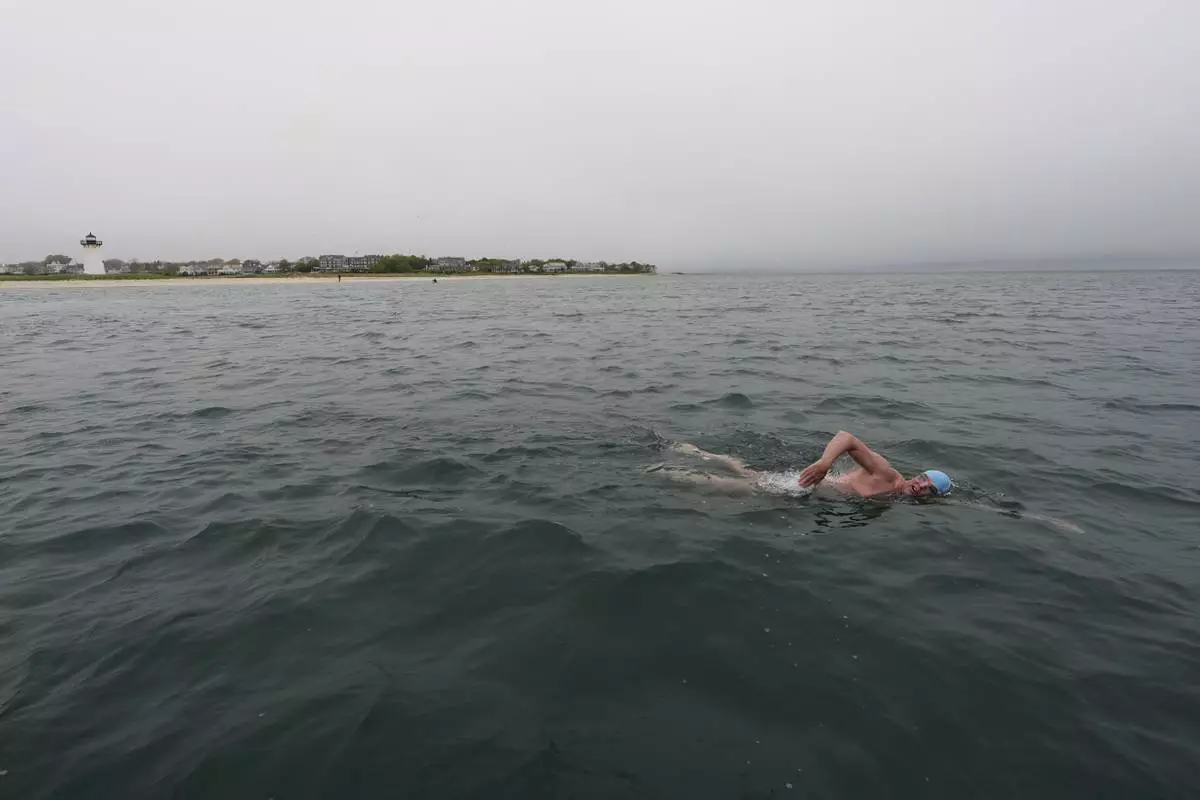
Endurance swimmer Louis Pugh swims off the coast pf Edgartown, Mass., Thursday, May 15, 2025. (AP Photo/Robert F. Bukaty)

Endurance swimmer Louis Pugh warms up on the ride back to shore after completing the first leg of his swim around Martha's Vineyard, Thursday, May 15, 2025, off Edgartown, Mass. (AP Photo/Robert F. Bukaty)
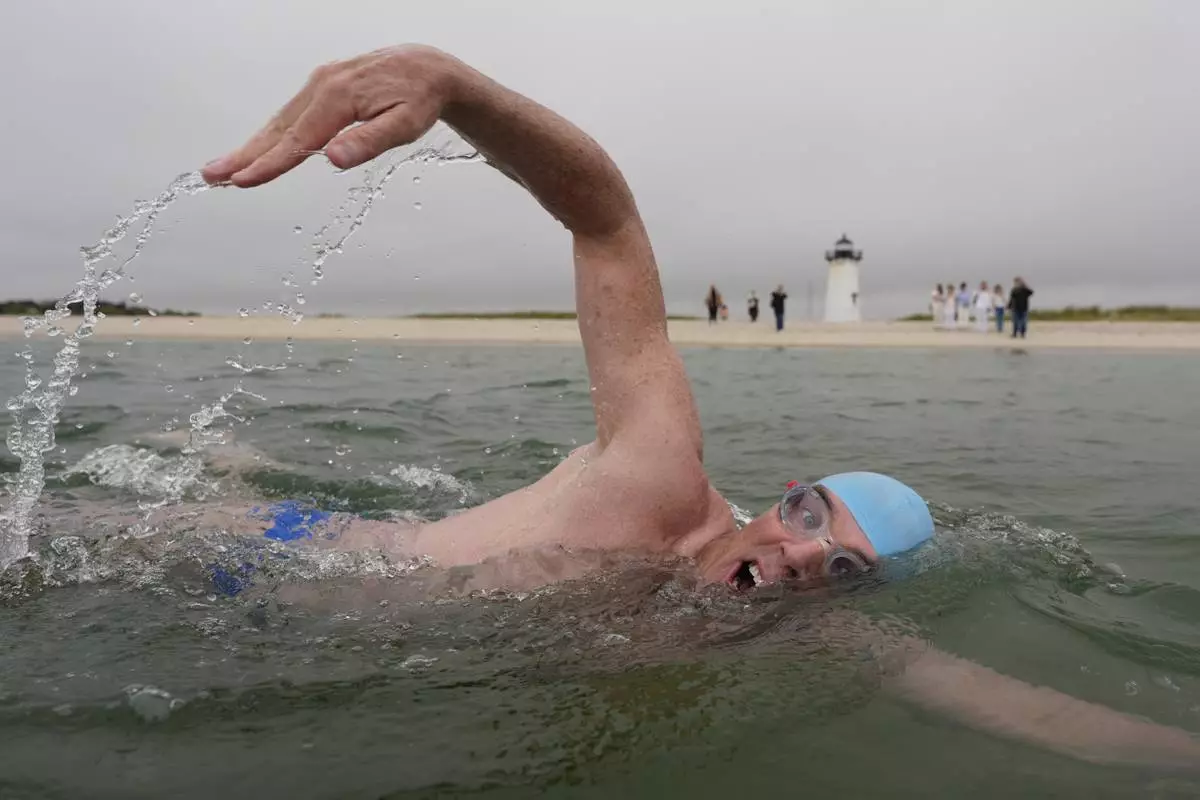
Endurance swimmer Louis Pugh swims near the Edgartown Harbor Light, Thursday, May 15, 2025, in Edgartown, Mass. (AP Photo/Robert F. Bukaty)
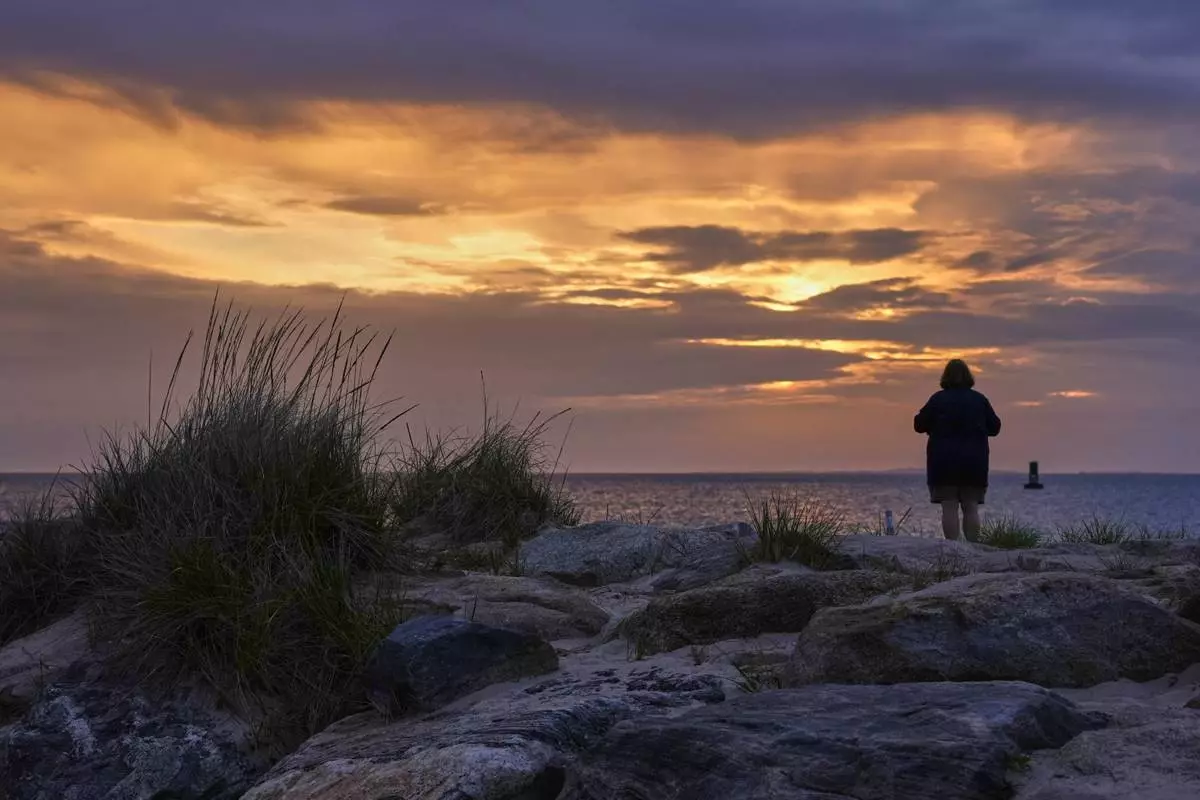
A woman views the sunset at Menemsha Beach, Wednesday, May 14, 2025, in Chilmark, Mass. (AP Photo/Robert F. Bukaty)
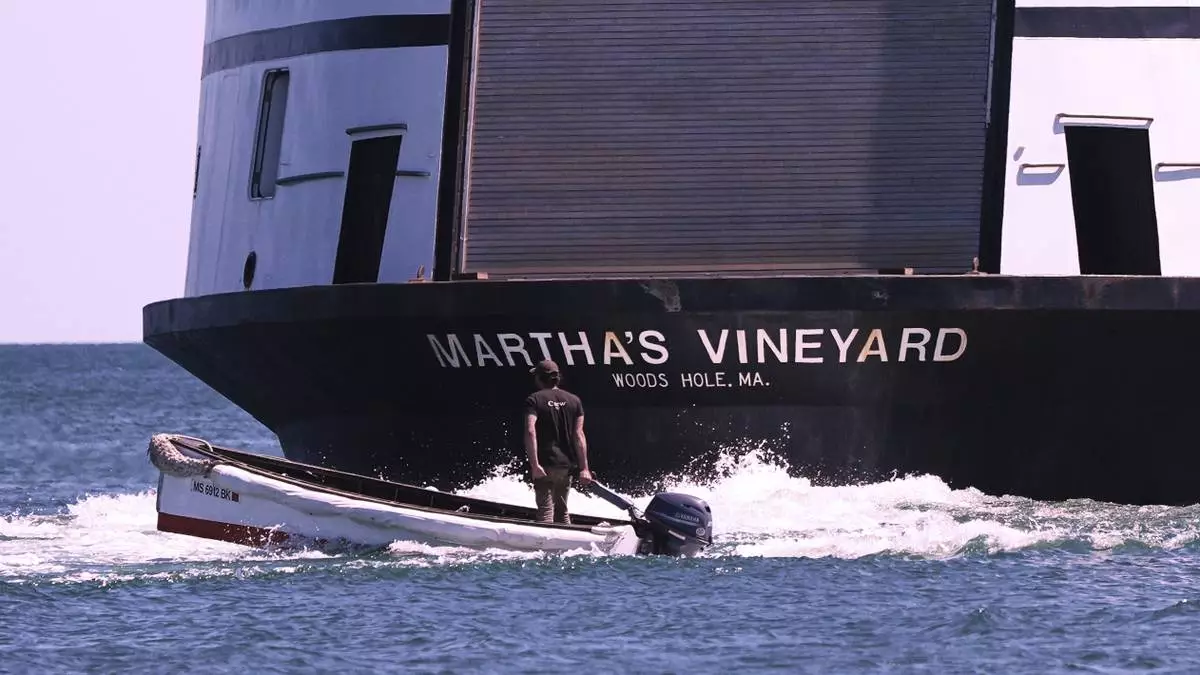
A man navigates the wake behind the Martha's Vineyard Ferry, Monday, May 12, 2025, in Vineyard Haven, Mass. (AP Photo/Charles Krupa)
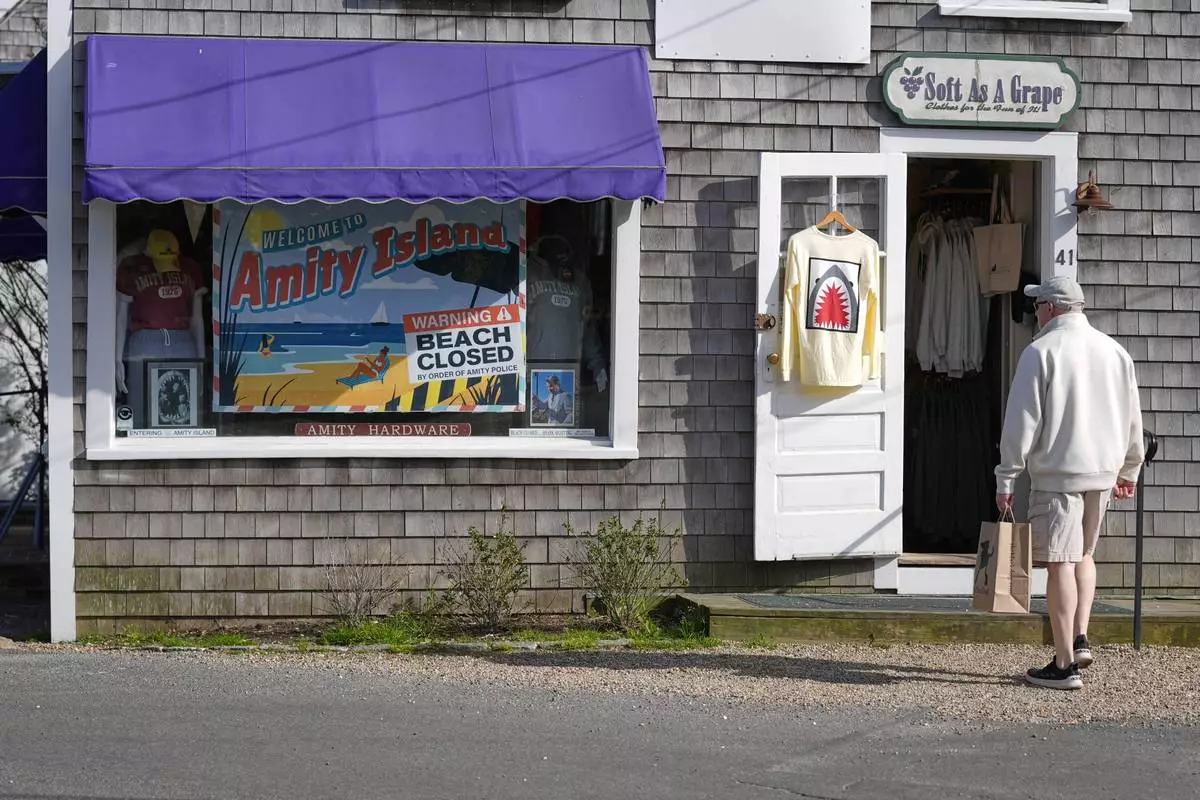
A visitor arrives at a shop selling Jaws-related souvenirs, Wednesday, May 14, 2025, in Edgartown, Mass. (AP Photo/Robert F. Bukaty)
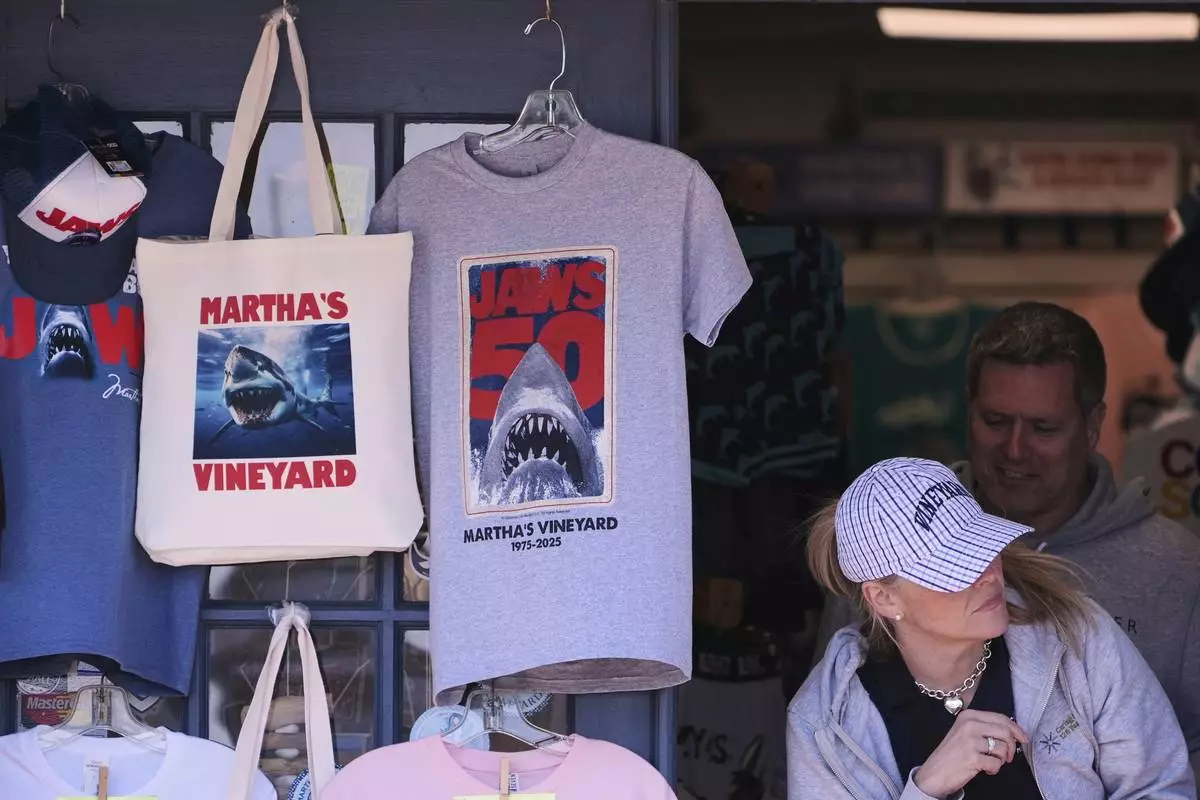
A shopper walks past items featuring the Jaws movie at Neptune's Sea Chest gift shop, Monday, May 12, 2025, in Vineyard Haven, Mass., on Martha's Vineyard Island. (AP Photo/Charles Krupa)
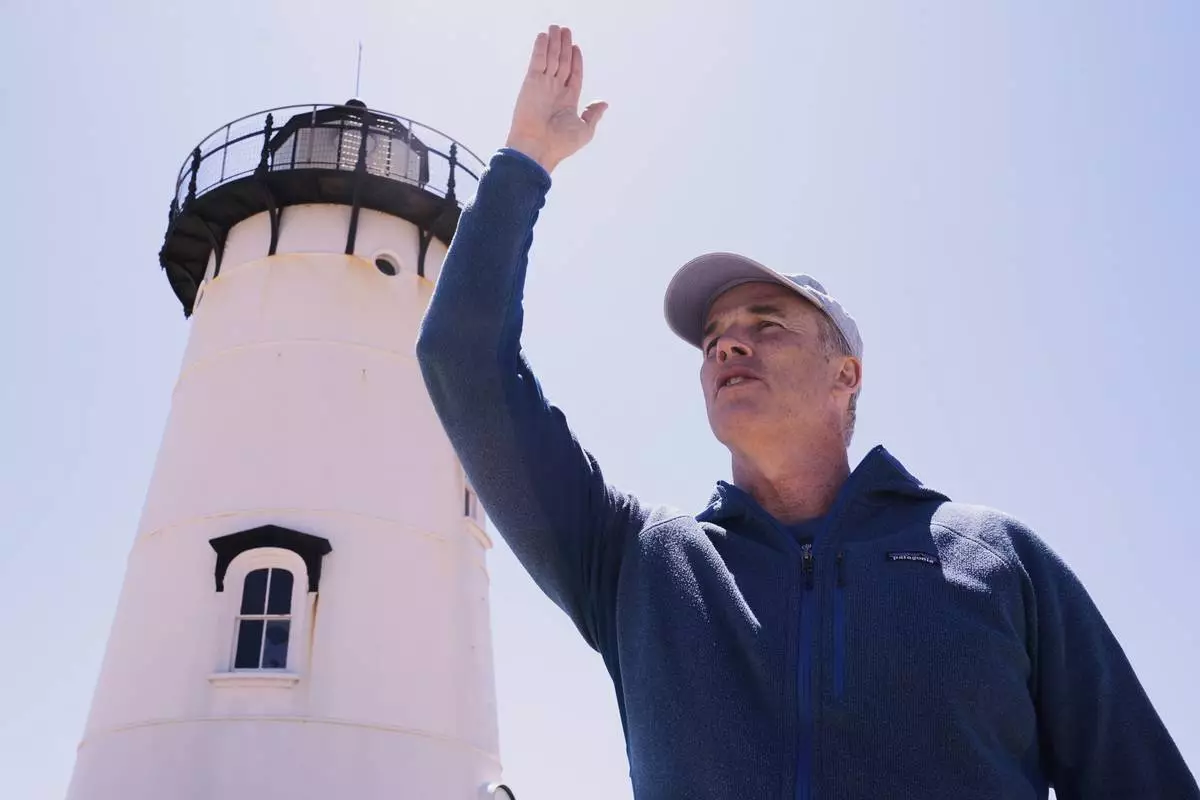
Endurance swimmer Lewis Pugh gestures to where he will begin his swim around Martha's Vineyard island, which is expected to take 12 days, near the Edgartown Lighthouse, Monday, May 12, 2025, in Edgartown, Mass. (AP Photo/Charles Krupa)
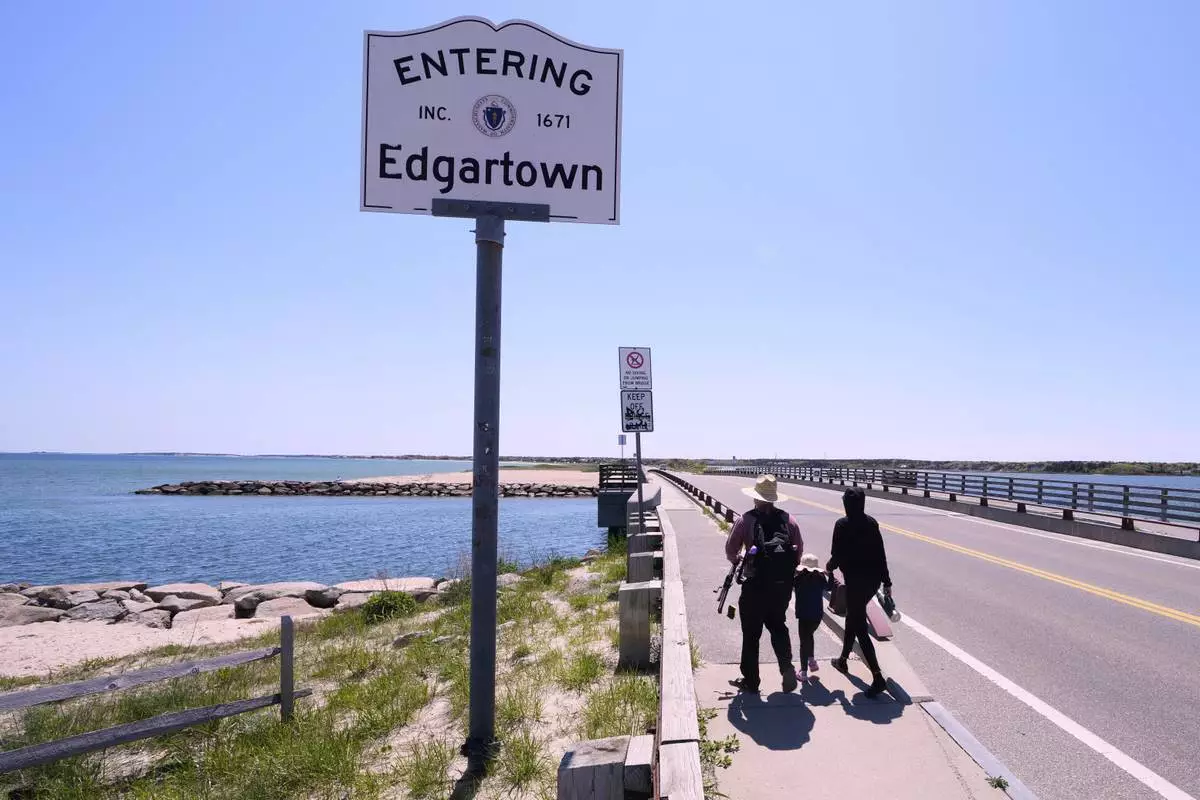
A family walks to the span of the American Legion Memorial Bridge, also known as the "Jaws Bridge", while spending the day fishing, Monday, May 12, 2025, in Edgartown, Mass., on Martha's Vineyard Island. (AP Photo/Charles Krupa)














